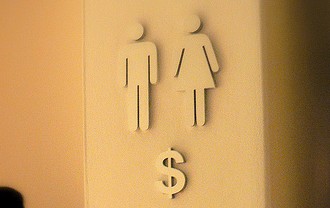
The share of American adults who believe that men and women should be equal both at work and at home has been growing over the past four decades — it’s currently the highest it’s ever been. But even today, roughly a quarter of U.S. adults still hold more complicated views about gender equality.
This split in public opinion is evidence of what sociologists call the “stalled gender revolution”: a slowing down of the progress made toward gender equality since the 1970s, characterized by a leveling off of the share of working women and the persistence of the gender-pay gap.
A recent article in The New York Times highlighted research investigating views about gender equality by sociologists William Scarborough, Ray Sin, and Barbara Risman. To better understand why the gender revolution stalled, the researchers asked people questions like: Is it better when a man is a breadwinner and a woman takes care of the home and family? Do children suffer when mothers work? Are men better suited for politics than women?
The researchers focused on the group of respondents who embrace gender equality in either the public or the private domain, but not in both. They found that most of these people believe that women should have the same opportunities as men to work and participate in politics, but that they should be more involved in home-making and child-rearing. Risman explains one rationale for why people may hold these beliefs:
“You can believe men and women have truly different natural tendencies and skills, that women are better nurturers and caretakers, and still believe women should have equal rights in the labor force.”
The new study also reveals that among male Boomers (the generation born in the prosperous decades following WWII), one in five believe women should be more equal at work than at home. These men may resist gender equity at home because they wish to benefit from a second household income without doing any extra chores. Sociologist David Cotter suggests,
“At home, men are more resistant to that change because it really means surrendering privilege…This way, they don’t have to do more laundry.”
But according to Risman and colleagues, a reluctance to endorse equity is not the only reason for these complicated attitudes. Instead, these trends may reflect Americans’ opinions about how much equity is achievable in a social context with tough work schedules but without paid family leave, subsidized child care, or flexible schedules. Regarding millennials in particular, Risman notes:
“Their attitudes aren’t stalled, but what might be stalled is the ability to live one’s values…As workplaces become more demanding, I think it’s harder to be the parent of a young child and a full-time worker now than 30 years ago.”
Scarborough, Sin, and Risman’s findings help to explain the attitudes underlying the stalled gender revolution. They also provide valuable insights into structural solutions that could give it a jump start.
For more about the “stalled gender revolution,” see Tristan Bridges’ Sociological Images post.


